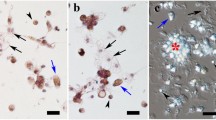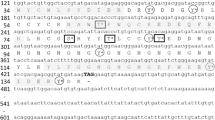Abstract.
BRA-2, a major C-type lectin in the hemolymph of the acorn barnacle Megabalanus rosa was detected in shell-associated proteins. Immobilized BRA-2 promoted CaCO3 crystallization as determined by an in vitro pH-drift mineralization assay. In nature, calcification occurs as wound repair in M. rosa after breakage of the shell plate. To observe this phenomenon, we inserted a rubber cube inside the mantle cavity of M. rosa through the basal plate, and kept the organisms in a tank for several weeks. The rubber cube was covered first with brownish-colored material, probably a melanin, and then with CaCO3 5 weeks after the insertion. In the CaCO3-associated proteins, BRA-3, a minor component of M. rosa hemolymph lectins, was present in addition to BRA-2. The presence of both the lectins and their ligands on the hemocyte was also observed. These results suggest that the C-type lectins of the M. rosa hemolymph participate in mineralization as well as defense in these organisms.
Similar content being viewed by others
Author information
Authors and Affiliations
Additional information
Electronic Publication
Rights and permissions
About this article
Cite this article
Kamiya, .H., Jimbo, .M., Yako, .H. et al. Participation of the C-type hemolymph lectin in mineralization of the acorn barnacle Megabalanus rosa. Marine Biology 140, 1235–1240 (2002). https://doi.org/10.1007/s00227-002-0789-6
Received:
Accepted:
Issue Date:
DOI: https://doi.org/10.1007/s00227-002-0789-6




